#though pilgrimage is something really unique to palestine
Text
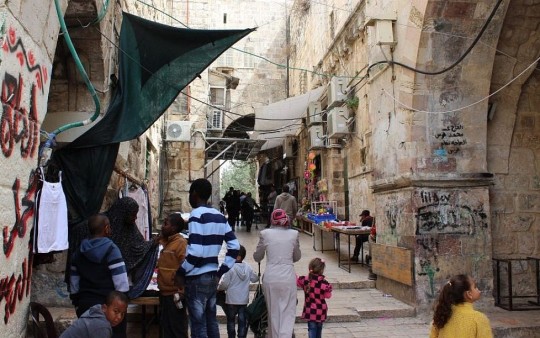
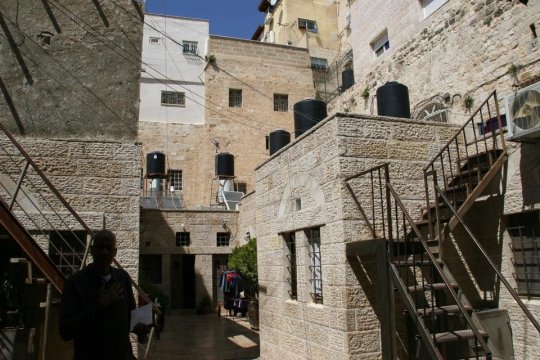
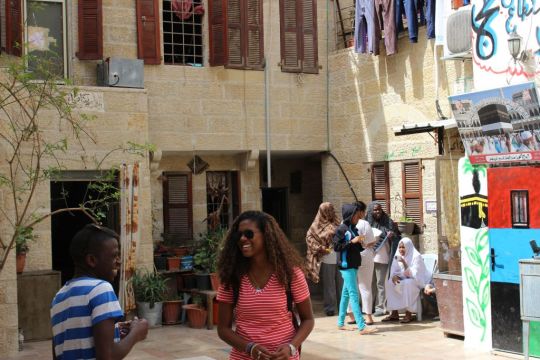
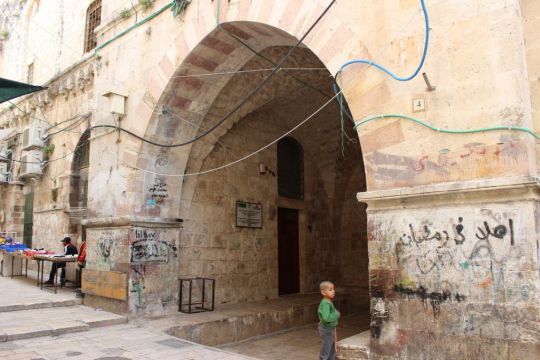
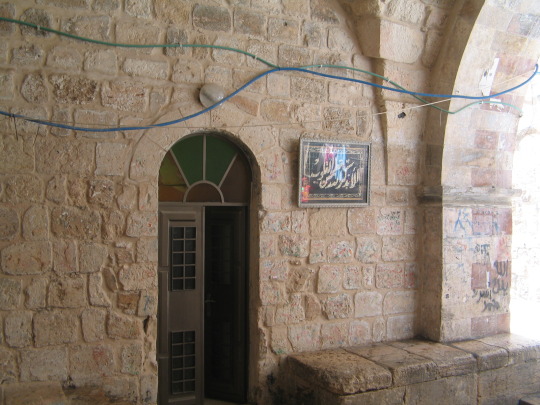
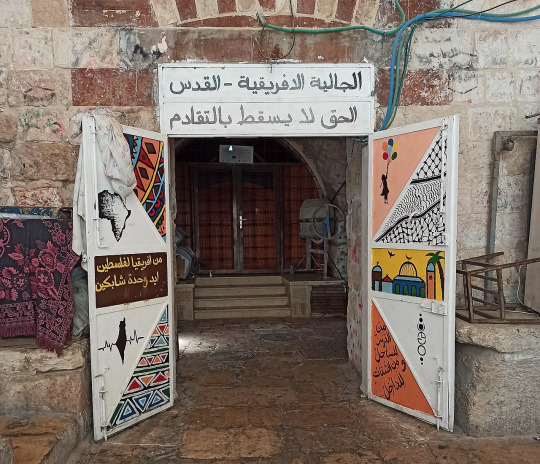
pictures from the old city of jerusalem's "african quarter", which comprises of ribat al-mansuri and ribat al-basiri. mamluks built the compounds in the late 13th century to house muslim pilgrims and the poor. ottomans used them as prisons, and the british closed the prisons when they occupied jerusalem in 1917. the ribats then came under the ownership of the islamic waqf, and were leased to the local afro-palestinian community.
afro-palestinians have an array of origins. like some other diaspora communities in palestine, some came through pilgrimage - al-aqsa was on their hajj path, and while many would visit to pray there, some decided to settle in jerusalem. there are also some who came to palestine enslaved or conscripted, most recently to ottomans. some came during the time of the british mandate, many as conscripted laborers to the british. afro-palestinians who can trace their ancestry do so to nigeria, chad, senegal, or sudan.
jerusalemite afro-palestinians were employed to guard al-aqsa throughout the ottoman period. during the 1948 palestine war, some joined the arab liberation army and fought with fellow palestinians to defend al-aqsa and their presence in jerusalem. the position of guards has been taken by occupation soldiers since the 1967 war, after which a quarter of the afro-palestinian population became refugees in surrounding countries.
jerusalem's afro-palestinian community still live in the compounds today, which also house the local african community society. (the door in the last picture is theirs.) afro-palestinians as a whole face the same legal, social, and economic restrictions and maltreatment as other palestinians, compounded with the same anti-black racism from israeli government and police which ethiopian jews and eritrean asylum seekers face, which result in a form of "passport racism" unique to them.
#palestine#architecture#muslim#diasporic palestine#my posts#see image description on 6th pic for translation#also worth mentioning that all four of the 'origin' countries are majority-muslim or had large muslim communities in case u didnt know#(though i wouldn’t doubt it if some nigerian or sudanese-palestinians came in the mandate era)#i feel like most of this blog's main demographic may know about sudan but maybe not the other three#there’s other black populations in pretty much every other me country who came for similar reasons#though pilgrimage is something really unique to palestine#and i’d guess also maybe modern day saudi arabia#though there’s large armenian communities in lebanon and syria who were established bc of pilgrimage to palestine
469 notes
·
View notes
Text
Music Everywhere
The readings and film for this week had me thinking a lot about the interconnectivity of music in our lives, whether it be as a ‘mobile’ tool, an ‘autonomous’ tool, an escapist mechanism, or even as a voice of the people. I think the fact that music can exist in so many capacities and be understood in so many contexts is something unique to its use as a tool of communication, but this does not make it immune to systems of manipulation.
I thought about this specific aspect in the context of the sonidero and the legacy of cumbia. “For decades, tropical music like cumbia carried a class stigma. It's historically been seen as the music of the masses, and it's been treated with disdain by the upper classes, who often view music from abroad as inherently more sophisticated. Only in the last decade has it experienced a resurgent interest from the type of college-educated kid who might have previously listened to imported rock music” This quote really tied all the readings together for me, in giving the example of how the mobility of music (in the context of technological access) has given certain genres their voices, and to an extent their autonomy recognizing that autonomy does not mean “separation from dominant institutional spheres”. So even though, there is this slow acceptance of “the music of the masses” there is a tendency to separate the masses from their music, and this tendency, in many cases, can lead to appropriation/mobilization of the message that the music aims to send.
This mobilization can be traced back to the film about Rodriguez “Searching for the Sugar Man” and the way that his music glorified him as an anti-apartheid hero, much to his own surprise. In this way the appropriation translates into a different sort of mobilization of the message in his music whose intended audience (people of Detroit) did not necessarily react to, but in turn led to a mobilization of an audience unbeknownst to him. This Sugar Man phenomenon brings me to the question of whose right is it to enact mobilization behind certain music? How do we differentiate between mobilization and appropriation with certain types of music?
The mobilization of music, sonidero culture and Rodriguez’s international impact all made me think about the ways in which reggae music’s mobilization functions in a similar way. Reggae’s overarching message in the struggle against Babylon, though targeted at the Jamaican people and more largely people of the African diaspora, has also mobilized oppressed peoples internationally. Here is an interesting article in the way that Bob Marley’s name and his image has done so in Palestine and Israel https://www.nytimes.com/1992/10/11/style/out-there-israel-pilgrimages-with-reggae-beat.html
Is there a way to use music to distance autonomy from the institutional orders or does it always have to be as a reaction to the systems that it is resisting?
0 notes
Text
8 best travel books to read! | The Times of India
New Post has been published on https://apzweb.com/8-best-travel-books-to-read-the-times-of-india/
8 best travel books to read! | The Times of India
ttps://timesofindia.indiatimes.com/”http://www.w3.org/TR/html4/strict.dtd” >
8 best travel books to read! | The Times of India
TIMESOFINDIA.COM | Last updated on – May 13, 2020, 08:30 ISTShare
fbsharetwsharepinshare
01/98 Best travel books to read!
Wild greenery, splendid mountains, seamless beaches and breathtaking scenery are some vivid visuals that come straight to one’s mind upon hearing the word ‘travel’. Exploring new places and creating everlasting memories while travelling is something that everyone looks forward to. The sound of birds chirping and the music of river water lapping over rocks makes everyone appreciate the beauty of Mother Nature.
In the hustle and bustle of our fast paced lives, travelling helps us to take a break and soothe our nerves. However, it is also true that our busy lives do not always allow us to take out enough time to travel. In such times, books can help us travel places and wander around without actually going there. “I read; I travel; I become”, is what Derek Walcott (poet and playwright) once said. Thus, books have intense power in themselves to make us delve into the beauty of nature and to travel in our mind.
Here are 8 best travel books to read!
readmore
02/9‘The Rings of Saturn’ by W.G. Sebald
The book begins as the record of a journey on foot through coastal East Anglia. From Lowestoft to Bungay, Sebald’s own story becomes the conductor of evocations of different people and cultures of Chateaubriand, Thomas Browne, Swinburne and Conrad, of fishing fleets, skulls and silkworms. The result is a rich meditation on the past via a melancholy trip along the Suffolk coast, and an intricately patterned book on the transience of all things human.
Pic credit: W. W. Norton & Company
readmore
03/9‘A Movable Feast’
The book is a celebration of 38 foodie tales from around the world. It is a compilation of short stories from famous chefs, writers and foodies around the world, who all share a love of food and the power it has to bring people together.
Pic credit: Lonely Planet
readmore
04/9‘Around the World in 80 Trains: A 45,000-Mile Adventure’ by Monisha Rajesh
The book is a witty and irreverent look at the world and a celebration of the glory of train travel. It takes the readers on a route that covers 45,000 miles – almost twice the circumference of the earth – coasting along the world’s most remarkable railways- from the cloud-skimming heights of Tibet’s Qinghai railway to silk-sheeted splendour on the Venice Simplon-Orient-Express. The author offers a wonderfully vivid account of life, history and culture in a book that will makes everyone laugh out loud – and reflect on what it means to be a global citizen.
Pic credit: Bloomsbury Publishing
readmore
05/9‘The Art of Travel’ by Alain de Botton
The book is a travel guide with a difference. It delves into 2 very important questions-why we go to a place and how we might become more fulfilled by doing so. With the help of a selection of writers, artists and thinkers – including Flaubert, Edward Hopper, Wordsworth and Van Gogh – this book provides invaluable insights into everything from holiday romance to hotel mini-bars, airports to sight-seeing. It tries to explain why we really went in the first place – and helpfully suggests how we might be happier on our journeys.
Pic credit: Hamish Hamilton UK
readmore
06/9‘The Crossway’ by Guy Stagg
The book is about Guy Stagg, who in 2013, walked from Canterbury to Jerusalem. Though a non-believer, he began the pilgrimage after suffering several years of mental illness, hoping the ritual would heal him. For ten months he hiked alone on ancient paths, crossing ten countries and more than 5,500 kilometers. Travelling without support, he had to rely each night on the charity of strangers. The book offers a unique insight into contemporary faith, and lays bare the author’s struggle to escape the past and walk towards recovery.
Pic credit: Picador
readmore
07/9‘Eat Pray Love: One Woman’s Search for Everything Across Italy, India, and Indonesia’ by Elizabeth Gilbert
The book centers on Elizabeth Gilbert, a woman in her early thirties, who had everything a modern American woman was supposed to want- husband, country home, successful career. But instead of feeling happy and fulfilled, she was consumed by panic and confusion. This book is the story of how she left behind all these outward marks of success, and set out to explore three different aspects of her nature, against the backdrop of three different cultures: pleasure in Italy, devotion in India, and a balance between worldly enjoyment and divine transcendence on the Indonesian island of Bali.
Pic credit: Riverhead Books
readmore
08/9‘Jerusalem: Chronicles from the Holy City’ by Guy de Lisle
The book is a travelogue and memoir in which Delisle recounts his trip to Jerusalem, parts of Palestine and the West Bank, as well as within Israel, with his two young children and his long-term partner, Nadège. It expertly lays the groundwork for a cultural road map of contemporary Jerusalem and eloquently examines the impact of the conflict on the lives of people on both sides of the wall while drolly recounting the quotidian: checkpoints, traffic jams, and holidays.
Pic credit: RHUK
readmore
09/9‘Lands of Lost Borders: A Journey on the Silk Road’ by Kate Harris
The book is the chronicle of Harris’s odyssey and an exploration of the importance of breaking the boundaries we set for ourselves, an examination of the stories borders tell, the restrictions they place on nature and humanity, and a meditation on the existential need to explore—the essential longing to discover what in the universe we are doing here. It explores the nature of limits and the wildness of the self that can never fully be mapped. Weaving adventure and philosophy with the history of science and exploration, it celebrates our connection as humans to the natural world, and ultimately to each other.
Pic credit: Dey Street Books
readmore
Source link
0 notes
Text
What a vocation to be a Holy Land Franciscan looks like
New Post has been published on https://pray-unceasingly.com/catholic-living/catholic-news/what-a-vocation-to-be-a-holy-land-franciscan-looks-like-2/
What a vocation to be a Holy Land Franciscan looks like
Jerusalem, Sep 10, 2018 / 07:01 pm (CNA/EWTN News).- A religious vocation to serve in the Holy Land is demanding, but there is nothing like walking where Christ walked to strengthen the life of a Christian, the Franciscans of the Holy Land maintain.
Fr. Benjamin Owusu, O.F.M., told CNA he decided to join the Franciscans of the Holy Land out of “a love for the land which received our Lord and a love to serve in this unique place, to meet people from all walks of life.”
“If you really don’t have the passion to be in that place, you will definitely leave, especially in hard times,” Owusu said.
Owusu, who is from Ghana, has been a Franciscan for 20 years. He presently works with the pilgrimage office at the Washington, D.C.-based Franciscan Monastery of the Holy Land in America.
“The holy places have a big draw. It is very powerful,” said Father Athanasius Macora, O.F.M. “When you come here, people are very moved by the experience. It puts the gospel in perspective… It’s a very powerful tool for evangelizing or re-evangelizing Catholics.”
Macora, an American who grew up in a military family, has spent two years in Jordan, three years in Damascus, and the last 20 years in Jerusalem, where he now serves as guardian of the Flagellation Monastery.
The Franciscan Custody of the Holy Land is among the oldest and largest Catholic institutions in the Holy Land. The province was founded by St. Francis of Assisi in 1217, just eight years after he founded the Franciscan order.
The Custody’s primary role is care of the Holy Places and for pilgrims, while the Latin Patriarchate of Jerusalem has pastoral responsibility for Latin-rite Catholics who live in the region.
As of 2016 the Custody had 216 friars. Their main presence is in Israel, but there are also friars in Palestine, Syria, Jordan, Cyprus, and Egypt.
“I have always been fascinated by the Holy Land and it is a very rich and stimulating environment. I have gotten a lot out of it personally. It is very different from the U.S.,” Macora told CNA. “Of course, some periods have been better than others. A few times it has been really hard. There are many positive things about the U.S. that I miss, but I committed myself to being here.”
Macora said he is most struck by the Church of the Holy Sepulchre, built over both the place of the Crucifixion and the tomb in which Christ's body was buried.
“The Church is the place where the death, burial and Resurrection (of Jesus Christ) took place and therefore it serves as a memorial to the Paschal mystery and the three most important days on the Christian calendar,” Macora said. “I think that Calvary and the Tomb are my favorite parts, but I like it when it is really quiet there.”
Macora has witnessed the Church of the Holy Sepulchre’s impact on pilgrims, like those who “decide to go to confession after 20 or 30 or even 40 years.”
Like many places of Catholic mission, the Holy Land Franciscans are also in need of vocations.
“We do need more brothers,” Macora added. “The shrines need friars because sometimes it gets really busy, and you need to give the guys a rest. A presence is really important in the shrines and that requires a lot of friars.”
Besides accompanying pilgrims and staffing the shrines, Franciscan friars also work in areas like parish ministry and as directors of schools.
“A vocation is from God and so if one feels called to serve here they have to consider it,” Macora said.
For Owusu, knowing the Holy Land and developing a particular attachment to it helps contribute to one’s vocation and desire to serve there.
“Serving in the Holy Land opens one to the reality of the world,” said Owusu, who said this service opens one to others who do not necessarily share one’s faith.
Israel itself is majority Jewish, with a predominantly Muslim Arab Palestinian minority. Many Christians have emigrated in recent decades, and now make up about two percent of the population.
Jerusalem itself is politically contested, with many in the Palestinian Authority hoping to secure East Jerusalem as the capital of an independent Palestinian state.
“It is a place where you meet different people, and different people have different views,” Owusu continued, tying this diversity to the Franciscan mission.
“It has opened me to accepting different people, because we are international,” he said. “You meet a lot of friars, even within our monastery, who come from different backgrounds. It has enriched me more, as far as my Franciscan vision is concerned.”
Macora was 15 years old when his father retired from the military in Texas, and he began exploring a religious vocation a few years later.
“In university I started to have strong feelings about serving the Church, feelings I could not dispel even though I tried,” he said. “So I started to think about where to serve, and the international dimension of the Franciscans and the Holy Land really appealed to me since we grew up in many places because of my father’s military career.”
Owusu said being a Holy Land Franciscan means “there’s always something to learn.”
“You need to learn, first of all, to accept other people,” he said. “You need to learn languages, and languages open you to culture, and culture also brings you that reality of the place. There is a lot to learn.”
“Of course, you don’t have to understand all these things to be a friar,” he added. “What you have, will be developed. What you have as a friar can be developed from there. There is always room to learn more.”
Pilgrimages to the Holy Land have resulted in some vocations. Owusu said one such vocation is a California priest who was drawn by the organ played at the Church of the Holy Sepulchre.
“We have another one who came from France on a pilgrimage. Afterwards he came back, and is now a friar over there,” said the D.C.-based friar.
Macora is also Secretary of the Status Quo Commission of the Custody of the Holy Land. In that role, he takes part in agreements and negotiations among the Churches with claims to the Church of the Holy Sepulchre.
The Status Quo agreement, reached in 1852, concerns the ownership and rights of Catholic and Orthodox Christian communities at important sanctuaries including the Basilica of the Holy Sepulchre, the Basilica of the Nativity in Bethlehem, and the Tomb of the Virgin Mary in Jerusalem.
Macora said the Franciscans of the Custody have a clear mission rooted in their history.
“We have a very specific identity which involves a heavy institutional burden, because we have to run so many projects,” he said. “The institutional part is not seen as very Franciscan by the Franciscans themselves, but we are here for 800 years now and the existence of the shrines and the large institutional Catholic presence is due also to those guys hundreds of years ago, so we just have to keep doing it.”
CNA Daily News – Middle East – Africa
0 notes
Text
Israel & Palestine
This country has always fascinated me... I’ve always wanted to go there! So we decided to spend there one week during Christmas time :)
We flew directly from Malpensa to Tel Aviv with EasyJet (really good prices!) and we spent in Tel Aviv the first night. The day after we took a taxi for 200 nis and we got in Jerusalem very early.
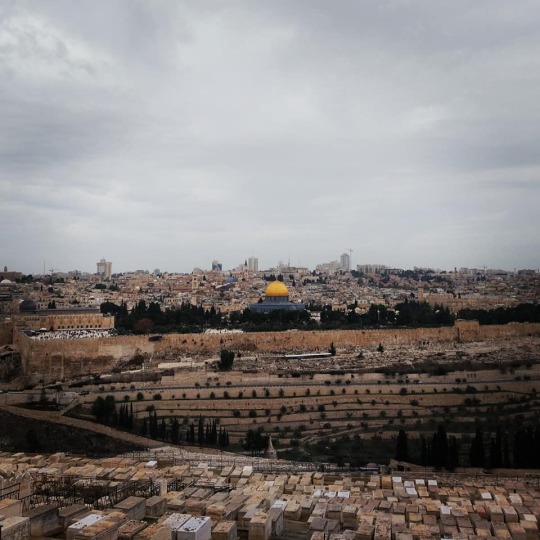
Jerusalem is one of the oldest cities in the world. Jerusalem, the city of incredible blend of religions and cultures…I was always curious why is Jerusalem so central for Christian, Jewish, and Muslim faiths and how would it be to walk around the streets where history was made? If you are going to visit Jerusalem for the first time, read on, you will find a list of absolute must-dos, some hidden non-touristic gems and also recommendations for some great restaurants!
WHAT TO SEE:
You should visit the 4 quarters of the Old City:
Christian quarter / Muslim Quarter / Jewish quarter / Armenian Quarter
The Western Wall (also known as the Wailing Wall or HaKotel in Hebrew) is probably the most known attraction to visit in Jerusalem, at least it was for me!
The wall is believed to be a unique place where you can have a direct line to Heaven.
When there, go to the respective section (Male or Female) and insert a small piece of paper with your prayer in the cracks between the stones of the Wall.


Located in the Christian Quarter of the Old City in Jerusalem, the Church of the Holy Sepulchre is a major pilgrimage destination for Christians.
I’d say that visiting the church is a worthwhile experience even for non-religious people.
The church was built on the site of the crucifixion of Jesus. The church is believed to contain the slab of rock where the body of Jesus Christ was laid to rest.

This architectural gem is the 3rd most important Muslim sight (after Mecca and Medina)!
The Dome is over 1000 years old and it is located in the Mount Temple.
It’s a holy place both for Muslim and for Jewish (they say under these two mosques there were 2 jewish old temples - one of those is the Salomon’s temple).
Mount Temple is an area with about 100 different structures including prayer spots, arches and fountains from different time periods.
I advise you to dress modesty if you would like to visit the mosque. Women cannot be touched (even for taking pictures)

The City of David is about the 3 000 years old remains of the once-grand citadel where a dynasty of Judean kings ruled. It is believed to be the place where Jerusalem was founded.
It is one big collection of archeological wonders!
For example, there are the Hezekiah’s tunnels – the structure that used to be the main source of water for ancient Jerusalem over 3 millennia ago.
Markets, as you know, are the blood vessels of a city.
Well, then Machane Yehuda market is definitely the blood vessel of Jerusalem! Explore the endless alleys and tiny streets while soaking up the endless smells and sounds of the bazaar.The market sells everything from fresh fruits to colorful spices of all sorts.


Go to the Mount of Olives for a panoramic overview of the whole city.
Mount of Olives was considered the center of Jerusalem before. Now it is a holy pilgrimage site for Jews and Christians.
You can also see the beautiful St. Mary Magdalene church, which is easily recognized by its Orthodox style golden domes.



Mount Zion, the highest point in ancient Jerusalem, is the broad hill south of the Old City’s Armenian Quarter.
Also called Sion, its name in Old Testament times became projected into a metaphoric symbol for the whole city and the Promised Land.
Here you can find:
• The Last Supper of Jesus and his disciples, and the coming of the Holy Spirit on the disciples, both believed to have been on the site of the Cenacle;
• The “falling asleep” of the Virgin Mary, believed to have occurred at the site of the Church of the Dormition.
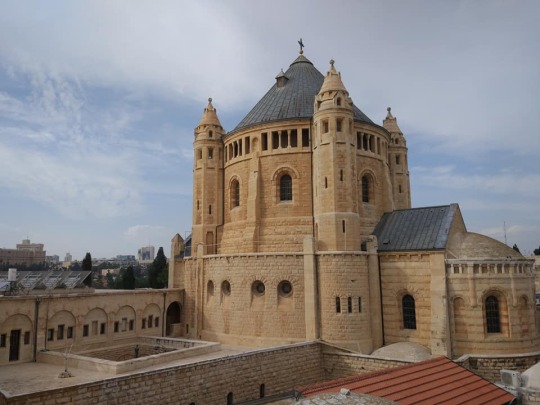
• The Council of Jerusalem, around AD 50, in which the early Church debated the status of converted gentiles (Acts 15:1-29), perhaps also on the site of the Cenacle.
WHERE TO STAY:
Shamai Suites Hotel: cheap but confortable and big apartaments located right in the city center.
WHERE TO EAT:
- Armenian Tavern Jerusalem
- Hummus Ben Sira (best Hummus in Jerusalem)
- Manou ba shouk
- Azura
- Lina Restaurant

WHERE TO DRINK:
-Mike’s place
TRIPS from JERUSALEM:
DEAD SEA

EIN GEDI National Park

MAZADA

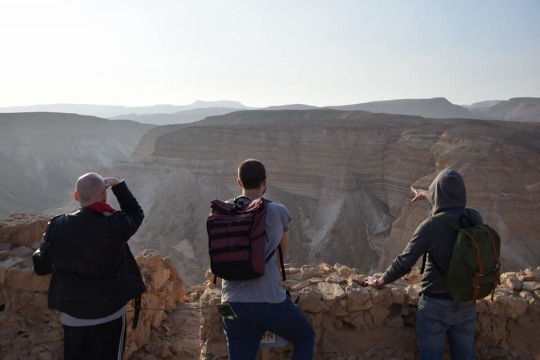
If you need a taxi driver contact, please contact me in private >> a nice person, an amazing guide, really good price.
PALESTINE
Many people said “don’t go there”, but Cisgiordania really worths :)
We took bus number 321 from Damascus Gate and in 30 minutes we reached Bethlem.
Here we met a nice guy who brought us around the city:
- Herodium
It is a truncated-cone-shaped hill where Herod the Great is believed to have been buried there.
- Palestinian food in one of his friends’ restaurant

- Graffiti Wall
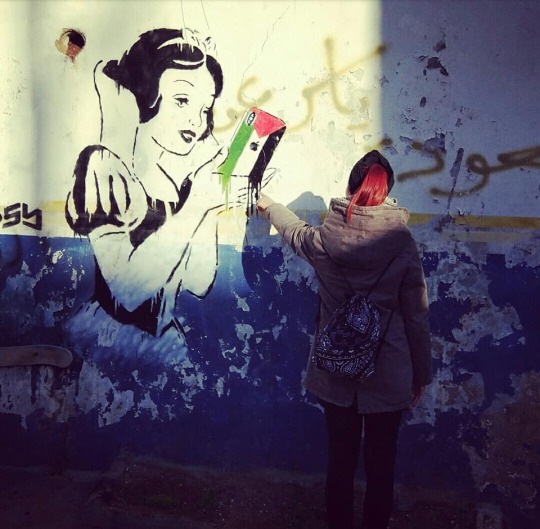
The Israeli West Bank barrier or wall (for further names see here) is a separation barrier in the West Bank or along the Green Line. Israel considers it a security barrier against terrorism, while Palestinians call it a racial segregation or apartheid wall. It has a total length of 708 kilometres.

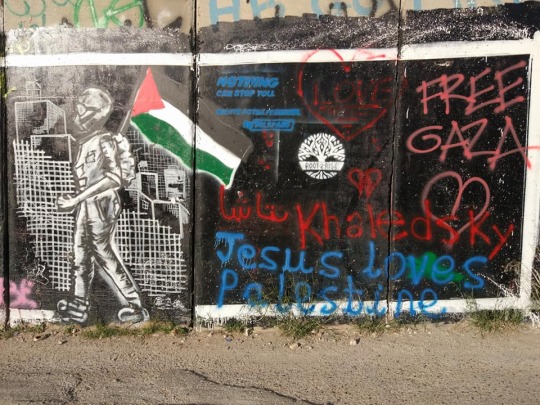
It’s really touchy...
And you can also find the famous graffiti of Banksy:

Tel Aviv is a total different city thou.
Tel Aviv is as modern a city as it gets. There’s still some old stuff, but a day in Tel Aviv is a day of exploring not only some of Israel’s ancient history, but also the new, vibrant, modern side of Israel.

We experienced something in Tel Aviv that we’ve never experienced in a foreign country not on the North American continent. Tel Aviv almost feels like it could be an American coastal city, minus the tiny streets of Neve Tzedek and Jaffa, the oldest port in the world.
The streets are wide, well-marked, with drivers that follow the rules of the road and even stop for pedestrians. It might also have to do with Tel Aviv’s diversity of people. Even though we were in the Middle East for our very first time, a place that many were concerned about us visiting, we had an immediate sense of familiarity and comfort.
You don’t breath tensions as in Jerusalem...
WHAT TO SEE:
- The Carmel street market (‘Shuk HaCarmel’)
- Old city (Jaffa)
Jaffa is the original ancient port city. Jaffa is the opposite of Tel Aviv, filled with cobblestone streets, buildings that are hundreds of years old, and a traditional flea market.

- Neve Tzedek
Neve Tzedek started as a suburb of Jaffa, but turned into the beginning of Tel Aviv. In addition to its calm and quaint feel in the middle of a big city, Neve Tzedek also offers one-off boutiques for a little shopping.
- Hatachana
- Tel Aviv Port - namal tel aviv
- Shenkin St. - The Israeli version of SOHO
Art& Culture:
- Tel Aviv Museum of Art
- The Center for Contemporary Art (CCA)
WHERE TO STAY:
Ben U Apartments
WHERE TO EAT & DRINK:
- Falafel Gabai
- Flea Market Restaurant
- Cafe puaa
- Dallal
- Manta Ray
- Hatraklin
- Nanuchka
- Social Club
- Night Kitchen
- Kitchen market
- Radio
- Kuly alma
- Breakfast club
- Cat and dogs
- Nilus
- Imperial Café
0 notes
Text
What a vocation to be a Holy Land Franciscan looks like
New Post has been published on https://pray-unceasingly.com/catholic-living/catholic-news/what-a-vocation-to-be-a-holy-land-franciscan-looks-like/
What a vocation to be a Holy Land Franciscan looks like
Jerusalem, Sep 10, 2018 / 07:01 pm (CNA/EWTN News).- A religious vocation to serve in the Holy Land is demanding, but there is nothing like walking where Christ walked to strengthen the life of a Christian, the Franciscans of the Holy Land maintain.
Fr. Benjamin Owusu, O.F.M., told CNA he decided to join the Franciscans of the Holy Land out of “a love for the land which received our Lord and a love to serve in this unique place, to meet people from all walks of life.”
“If you really don’t have the passion to be in that place, you will definitely leave, especially in hard times,” Owusu said.
Owusu, who is from Ghana, has been a Franciscan for 20 years. He presently works with the pilgrimage office at the Washington, D.C.-based Franciscan Monastery of the Holy Land in America.
“The holy places have a big draw. It is very powerful,” said Father Athanasius Macora, O.F.M. “When you come here, people are very moved by the experience. It puts the gospel in perspective… It’s a very powerful tool for evangelizing or re-evangelizing Catholics.”
Macora, an American who grew up in a military family, has spent two years in Jordan, three years in Damascus, and the last 20 years in Jerusalem, where he now serves as guardian of the Flagellation Monastery.
The Franciscan Custody of the Holy Land is among the oldest and largest Catholic institutions in the Holy Land. The province was founded by St. Francis of Assisi in 1217, just eight years after he founded the Franciscan order.
The Custody’s primary role is care of the Holy Places and for pilgrims, while the Latin Patriarchate of Jerusalem has pastoral responsibility for Latin-rite Catholics who live in the region.
As of 2016 the Custody had 216 friars. Their main presence is in Israel, but there are also friars in Palestine, Syria, Jordan, Cyprus, and Egypt.
“I have always been fascinated by the Holy Land and it is a very rich and stimulating environment. I have gotten a lot out of it personally. It is very different from the U.S.,” Macora told CNA. “Of course, some periods have been better than others. A few times it has been really hard. There are many positive things about the U.S. that I miss, but I committed myself to being here.”
Macora said he is most struck by the Church of the Holy Sepulchre, built over both the place of the Crucifixion and the tomb in which Christ's body was buried.
“The Church is the place where the death, burial and Resurrection (of Jesus Christ) took place and therefore it serves as a memorial to the Paschal mystery and the three most important days on the Christian calendar,” Macora said. “I think that Calvary and the Tomb are my favorite parts, but I like it when it is really quiet there.”
Macora has witnessed the Church of the Holy Sepulchre’s impact on pilgrims, like those who “decide to go to confession after 20 or 30 or even 40 years.”
Like many places of Catholic mission, the Holy Land Franciscans are also in need of vocations.
“We do need more brothers,” Macora added. “The shrines need friars because sometimes it gets really busy, and you need to give the guys a rest. A presence is really important in the shrines and that requires a lot of friars.”
Besides accompanying pilgrims and staffing the shrines, Franciscan friars also work in areas like parish ministry and as directors of schools.
“A vocation is from God and so if one feels called to serve here they have to consider it,” Macora said.
For Owusu, knowing the Holy Land and developing a particular attachment to it helps contribute to one’s vocation and desire to serve there.
“Serving in the Holy Land opens one to the reality of the world,” said Owusu, who said this service opens one to others who do not necessarily share one’s faith.
Israel itself is majority Jewish, with a predominantly Muslim Arab Palestinian minority. Many Christians have emigrated in recent decades, and now make up about two percent of the population.
Jerusalem itself is politically contested, with many in the Palestinian Authority hoping to secure East Jerusalem as the capital of an independent Palestinian state.
“It is a place where you meet different people, and different people have different views,” Owusu continued, tying this diversity to the Franciscan mission.
“It has opened me to accepting different people, because we are international,” he said. “You meet a lot of friars, even within our monastery, who come from different backgrounds. It has enriched me more, as far as my Franciscan vision is concerned.”
Macora was 15 years old when his father retired from the military in Texas, and he began exploring a religious vocation a few years later.
“In university I started to have strong feelings about serving the Church, feelings I could not dispel even though I tried,” he said. “So I started to think about where to serve, and the international dimension of the Franciscans and the Holy Land really appealed to me since we grew up in many places because of my father’s military career.”
Owusu said being a Holy Land Franciscan means “there’s always something to learn.”
“You need to learn, first of all, to accept other people,” he said. “You need to learn languages, and languages open you to culture, and culture also brings you that reality of the place. There is a lot to learn.”
“Of course, you don’t have to understand all these things to be a friar,” he added. “What you have, will be developed. What you have as a friar can be developed from there. There is always room to learn more.”
Pilgrimages to the Holy Land have resulted in some vocations. Owusu said one such vocation is a California priest who was drawn by the organ played at the Church of the Holy Sepulchre.
“We have another one who came from France on a pilgrimage. Afterwards he came back, and is now a friar over there,” said the D.C.-based friar.
Macora is also Secretary of the Status Quo Commission of the Custody of the Holy Land. In that role, he takes part in agreements and negotiations among the Churches with claims to the Church of the Holy Sepulchre.
The Status Quo agreement, reached in 1852, concerns the ownership and rights of Catholic and Orthodox Christian communities at important sanctuaries including the Basilica of the Holy Sepulchre, the Basilica of the Nativity in Bethlehem, and the Tomb of the Virgin Mary in Jerusalem.
Macora said the Franciscans of the Custody have a clear mission rooted in their history.
“We have a very specific identity which involves a heavy institutional burden, because we have to run so many projects,” he said. “The institutional part is not seen as very Franciscan by the Franciscans themselves, but we are here for 800 years now and the existence of the shrines and the large institutional Catholic presence is due also to those guys hundreds of years ago, so we just have to keep doing it.”
CNA Daily News
0 notes